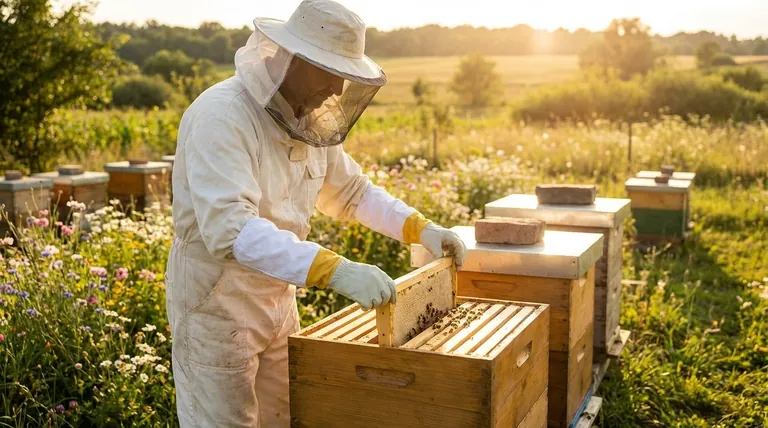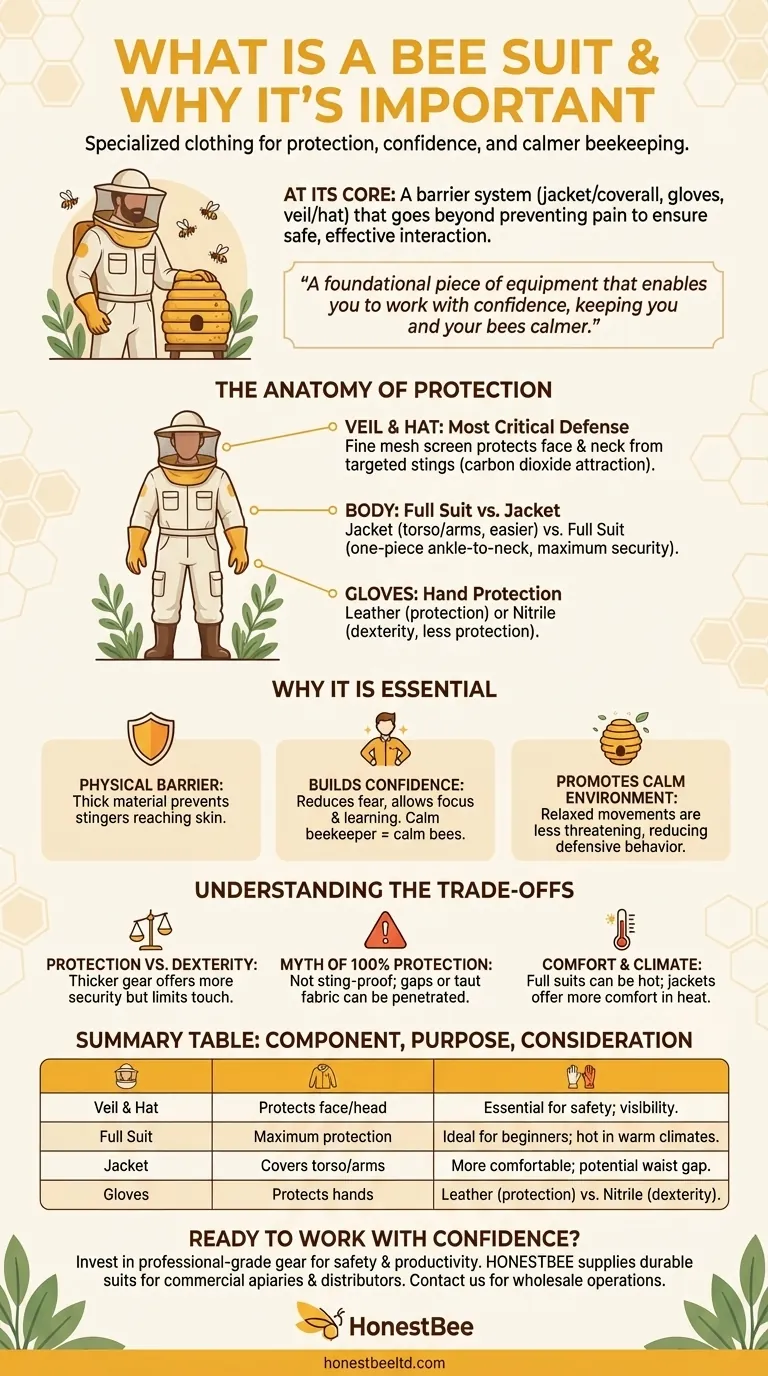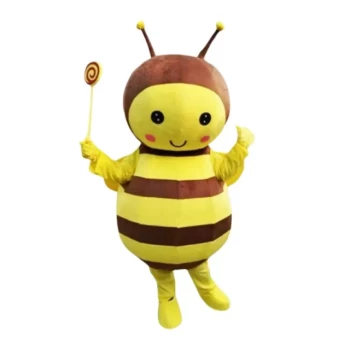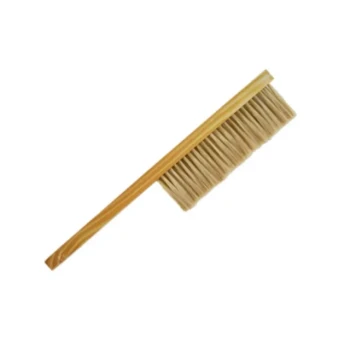At its core, a bee suit is specialized clothing designed to protect a beekeeper from stings. It typically consists of a jacket or full-body coverall, gloves, and a hat with an integrated veil to shield the face and head. Its importance goes beyond simple protection; it is a critical tool for ensuring a safe, calm, and effective interaction between the keeper and the hive.
A beekeeping suit is not just about preventing pain. It is a foundational piece of equipment that enables you to work with confidence, which in turn keeps you and your bees calmer, leading to a safer and more productive beekeeping experience.

The Anatomy of Beekeeper Protection
A complete bee suit is a system of components, each designed to protect a specific part of the body. Understanding these parts helps you choose the right level of protection for your needs.
The Veil and Hat: Your Most Critical Defense
The veil is arguably the most essential piece of protective gear. It is a fine mesh screen that covers your face and neck.
Bees often target the head, as the carbon dioxide you exhale can be interpreted as a threat. Stings to the face, particularly around the eyes, nose, and lips, are especially painful and dangerous.
The Body: Full Suit vs. Jacket
You have two primary options for body protection: a jacket or a full-body suit (coveralls).
A bee jacket covers your torso and arms and is worn with separate pants. It's easier to put on and take off but leaves a potential gap at the waist where bees could enter.
A full bee suit is a one-piece coverall that provides seamless protection from your ankles to your neck. This offers maximum security, which is highly recommended for beginners.
Gloves: Protecting Your Hands
Beekeeping gloves are designed to prevent stings on your hands while you work inside the hive. They are typically made of leather or other thick materials.
Many beekeepers also use disposable nitrile gloves over or instead of traditional bee gloves. While they offer less sting protection, they provide significantly more dexterity for delicate tasks.
Why a Bee Suit is Essential
Wearing protective gear is about more than just avoiding the discomfort of a sting. It fundamentally changes how you interact with your bees.
It Provides a Physical Barrier
The most obvious function of a bee suit is to create a physical barrier. The thick material and layered design keep a bee’s stinger from reaching your skin.
It Builds Confidence
For new beekeepers, the fear of being stung can be a major source of anxiety. A bee suit removes much of that fear, allowing you to focus on learning and observing your bees.
This confidence is crucial. Hesitant or jerky movements can alarm bees, making them more defensive. A protected beekeeper is a calmer beekeeper.
It Promotes a Calm Environment
Your calmness directly affects the bees. When you are relaxed, your movements are slower and more deliberate, which is less threatening to the hive.
By reducing your anxiety, a bee suit helps prevent the very defensive behavior you are trying to avoid, creating a more peaceful experience for everyone involved.
Understanding the Trade-offs
While essential, bee suits are not without their compromises. Understanding these trade-offs is key to selecting and using your gear effectively.
Protection vs. Dexterity
There is a direct trade-off between the level of protection and your ability to feel and work. Thicker suits and gloves offer more security but can feel cumbersome and limit your sense of touch when handling frames.
The Myth of 100% Protection
No bee suit is completely sting-proof. A determined bee can sometimes find a way through a seam, a gap, or even directly through the fabric if it is pulled taut against your skin. However, a good suit dramatically reduces the frequency of stings.
Comfort and Climate
Full bee suits, while offering the most protection, can be very hot and restrictive, especially in warm climates. This discomfort can lead to fatigue during hive inspections. A jacket may be a more comfortable option in hot weather.
Making the Right Choice for Your Goal
Your choice of protective gear should align with your experience level and comfort with bees.
- If your primary focus is maximum safety as a beginner: Start with a full bee suit, a veil, and gloves. This will give you the confidence you need to learn without the constant fear of stings.
- If your primary focus is balancing protection with comfort: A bee jacket with an integrated veil, paired with durable pants and gloves, is a common and effective setup.
- If your primary focus is dexterity for delicate tasks: Consider using nitrile gloves. They allow for much finer motor control, but be aware they offer minimal sting protection.
Ultimately, investing in quality protective gear is an investment in your safety and your ability to be a calm, effective beekeeper.
Summary Table:
| Component | Purpose | Key Consideration |
|---|---|---|
| Veil & Hat | Protects face/head from stings; essential for safety. | Fine mesh screen allows visibility while preventing access. |
| Full Suit | Maximum protection; one-piece coverall from ankles to neck. | Ideal for beginners; can be hot in warm climates. |
| Jacket | Covers torso/arms; worn with separate pants for easier use. | More comfortable than full suit but may have gaps. |
| Gloves | Protects hands during hive work; balances protection/dexterity. | Leather for protection vs. nitrile for better touch. |
Ready to Work with Confidence?
Protecting your apiary starts with the right equipment. A high-quality bee suit is an investment in your safety, your confidence, and the productivity of your hives.
HONESTBEE supplies professional-grade beekeeping suits and protective gear designed for the demands of commercial apiaries and distributors. Our wholesale-focused operations ensure you get durable, reliable equipment that protects your most valuable asset—your beekeepers.
Contact HONESTBEE today to discuss your protective gear needs and get a quote for your operation.
Visual Guide

Related Products
- Beekeeping Gloves Goatskin Leather with Long Cotton Sleeve for Beekeepers
- Friendly Bee Mascot Costume Vibrant Engaging Promotional Asset
- Plush Bee Mascot Costume Professional Engaging Brand Ambassador
- Mesh Ventilated 3 Layer Goatskin Beekeepers Gloves for Beekeeping
- Superhero Bee Mascot Costume Dynamic Professional Brand Champion Costume
People Also Ask
- Why are protective gloves important in beekeeping? Boost Confidence & Safety in Your Apiary
- What should beekeepers consider regarding the fit of beekeeping gloves? Achieve Safety and Dexterity
- What is the safest way to handle frames in beekeeping? Master Gentle Handling for a Calm Hive
- What are the features of ventilated bee gloves? Stay Cool & Dexterous in Warm Weather
- What are the arguments for and against using gloves in beekeeping? Balancing Protection and Dexterity



















